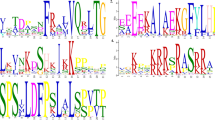The phytoplasmas are a group of plant pathogenic bacteria that cause devastating damage to over 700 plant species worldwide. They can propagate intracellularly in both insect and plant hosts. Despite their economic importance and unique biological features, phytoplasmas remain the most poorly characterized plant pathogens, primarily because efforts at in vitro culture, gene delivery, and mutagenesis have been unsuccessful. To shed light on these microorganisms, we constructed a DNA library for the onion yellows (OY) phytoplasma, Candidatus Phytoplasma sp. 16S-group I, AY-subgroup (onion), and obtained a draft sequence of phage clones that cover the whole chromosome, which is estimated to be 1 Mbp at most, and completely sequenced and annotated a significant portion of the chromosome (750 kbp). We also cloned and sequenced all three of its extrachromosomal (EC) DNAs (7, 5 and 4 kbp). The EC DNAs are thought to replicate via a rolling-circle replication mechanism with their own unique replicases. The chromosome encodes genes for basic housekeeping functions, such as DNA replication, transcription and translation, but none for amino acid or fatty acid biosynthesis, the TCA cycle, or oxidative phosphorylation. These genes seem to have been replaced by homolog in the host nuclear genome, since phytoplasmas can import many biological substances from host cells, as is the case with parasitic mycoplasmas. Surprisingly, the phytoplasma genome encodes even fewer genes for metabolic functions than that of mycoplasmas, which are known to possess minimal gene sets; genes for the pentose phosphate cycle, conserved in the genomes of all other reported bacteria, were not found in the OY phytoplasma genome. Phytoplasmas appear to possess the most minimal set of metabolic pathways identified in an organism to date; this minimalism may be related to the fact that phytoplasmas inhabit the nutrient-rich environment of the phloem. More than half of the unknown proteins are predicted to localize in the cell membrane, suggesting that they participate in interactions between the intracellular phytoplasma and the host cell surface or cytoplasm. Although the OY phytoplasma does not possess the typical genes related to pathogenicity found in other phytopathogenic bacteria, some of these unknown genes may be related to pathogenicity via their unique metabolic profile, such as actively importing host metabolites and affecting normal cellular functions. This work is the first genome analysis of a plant pathogen that inhabits plant phloem cells.
Similar content being viewed by others
Author information
Authors and Affiliations
Additional information
Received 3 June 2002/ Accepted in revised form 27 June 2002
Rights and permissions
About this article
Cite this article
OSHIMA, K., MIYATA, Si., SAWAYANAGI, T. et al. Minimal Set of Metabolic Pathways Suggested from the Genome of Onion Yellows Phytoplasma. J Gen Plant Pathol 68, 225–236 (2002). https://doi.org/10.1007/PL00013081
Issue Date:
DOI: https://doi.org/10.1007/PL00013081




